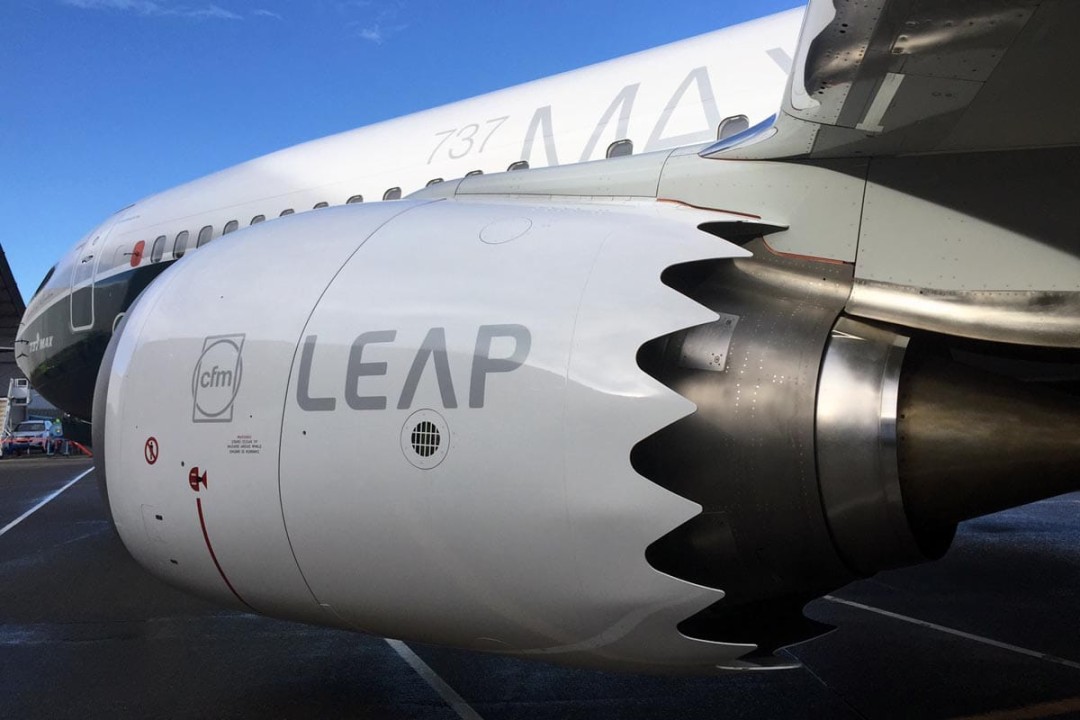
The Mystery of Serated Chevron Ducts: Boeing 737 MAX ,747-800 and B787 vs. A320 NEO and A350
Introduction
Aircraft engine design plays a crucial role in achieving optimal performance, fuel efficiency, and reduced noise levels. One noticeable feature present in some Boeing aircraft, such as the Boeing 747-800, 737 MAX and B787, is the presence of serated chevron ducts on their engines. This article delves into the reasons behind Boeing's utilization of serated chevron ducts and why Airbus has not incorporated them into their A320 NEO and A350 aircraft models.
1.Serated Chevron Ducts - An Engineering Marvel
Serated chevron ducts are a design enhancement found in the exhaust nozzles of certain aircraft engines. These unique features consist of notched or serrated edges along the engine exhaust, aiming to improve airflow and reduce noise during flight. The chevron ducts have garnered attention due to their contribution to a more fuel-efficient and environmentally friendly aviation industry.
2. Boeing's Adoption of Serated Chevron Ducts

Boeing has implemented serated chevron ducts in some of its aircraft, most notably in the B737 MAX and B787 models. The main reasons for this adoption can be attributed to the following:
a. Noise Reduction: Chevron ducts play a vital role in reducing engine noise by reshaping the exhaust airflow. The notches in the chevrons disrupt and spread out the exhaust plume's shock waves, resulting in reduced noise levels during takeoff and landing.
b. Improved Fuel Efficiency: The redesigned exhaust flow enabled by the chevron ducts contributes to better fuel efficiency. By minimizing the turbulence and enhancing airflow, Boeing's aircraft can achieve better performance and lower fuel consumption.
c. Compliance with Regulations: Noise regulations in many regions have become increasingly stringent, prompting aircraft manufacturers to seek innovative solutions for noise reduction. Boeing's adoption of chevron ducts aligns with these environmental requirements.
3. The A320 NEO and A350 Approach

On the other hand, Airbus, the primary competitor to Boeing, has chosen a different approach for their A320 NEO and A350 aircraft models. While Airbus also invests significantly in reducing engine noise and improving fuel efficiency, they have opted not to incorporate serated chevron ducts in their designs. Some reasons for this decision include:
a. Alternative Noise Reduction Techniques: Airbus employs other noise reduction techniques and technologies, such as advanced fan blade designs, improved materials, and aerodynamic improvements, to achieve similar noise reduction goals without relying on chevron ducts.
b. Different Engineering Philosophies: Each aircraft manufacturer follows a unique engineering philosophy, prioritizing different aspects in their designs. Airbus may have decided to focus on other aspects while still maintaining a high level of performance and efficiency.
c. Patents and Intellectual Property: The use of serated chevron ducts may be protected under Boeing's patents or intellectual property rights, limiting Airbus' ability to incorporate the same technology.
Conclusion


The utilization of serated chevron ducts in aircraft engine design highlights the ongoing efforts by aerospace manufacturers to enhance performance, reduce noise levels, and increase fuel efficiency. Boeing's implementation of these features in the B737 MAX ,747-800 and B787 models has been successful in achieving these objectives. On the other hand, Airbus has opted for different approaches, employing various advanced technologies to achieve similar outcomes in their A320 NEO and A350 aircraft models.
As the aviation industry continues to evolve, both Boeing and Airbus will likely continue to explore innovative engineering solutions to create more sustainable and efficient aircraft.
References:
"Boeing 787 Family." Boeing. (https://www.boeing.com/commercial/787/)
"Boeing 737 Max." Boeing. (https://www.boeing.com/commercial/737max/)
"Boeing 747-8." Boeing. (https://www.boeing.com/commercial/747/)
Barros, F. G. L. et al. "Chevron: The Serrated C-Duct Technology for Performance Improvement in Aircraft Engines." Journal of Aerospace Technology and Management, vol. 10, no. 3, 2018. (https://www.scielo.br/pdf/jatm/v10n3/1984-9648-jatm-10-03-00225.pdf)
"Airbus A320 Family." Airbus. (https://www.airbus.com/aircraft/passenger-aircraft/a320-family.html)
"Airbus A350 XWB." Airbus. (https://www.airbus.com/aircraft/passenger-aircraft/a350xwb-family.html)
Student at Calbright College
8moJasmin Ortiz Station Manager Station 1774 630 Trancas St Napa, CA Hi Jasmin this is somona lofton and I w.anted to do a stop payment on check number 501315 in the amount of $489.00 . I need it to be reissued thank you
Engineer- Reliability | United Airlines | Technical Operations
8moThis is really interesting !!
Aircraft Maintenance Professional Experienced in Major Maintenance & Line Maintenance of BOEING 737 NG, BOEING 737 MAX Powered with CFM 56-7B, CFM LEAP 1B And AIRBUS A320 Fam Powered with IAE V2500, P&W 1000 CFM LEAP 1A
9moWell clarified, as Chevron ducts are introduced by Boeing it may be patented to them, this reason may be resisting Airbus from introduction of this efficient efficient design in their models
Supply Chain Manager - Heavy Maintenance & Contracts at Metro Trains Melbourne
9moWell there you go! I just thought it was the OEM’s solution to blending out corrosion🤦♂️
Attended MMH College - India
9moI am interested